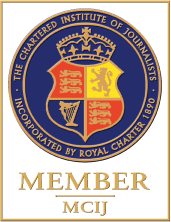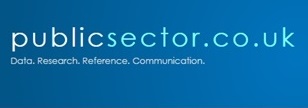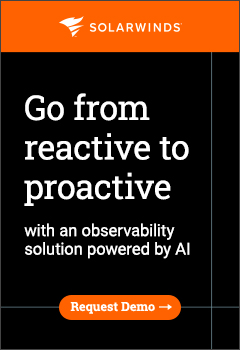Lean thinking offers the best possible solution to public sector managers facing huge financial constraints and tasked with stretching limited resources for better service and improved performance.
Many people think lean is just about reducing head count and consequently the name suggests negative overtones for many employees, but actually, implemented in the right way, Lean is a powerful system of management that provides the opportunity for every employee to improve they way they work and so improves motivation and morale.
Lean is not the latest management craze; it is a proven and robust management methodology stemming from the Toyota Production System. It has achieved extraordinary results over the past 50 years – starting in manufacturing and latterly spreading to a range of other sectors – from the armed forces and offices to retail – and more recently to hospitals, government and other public sector organisations.
Operational Efficiency Programme
For those responsible for implementing the Operational Efficiency Programme it is far more than just implementing piecemeal tools and techniques, but rather a proven route to re-engineering back office processes. It provides a sustainable methodology for simplifying, standardising and consolidating systems and processes. As such, it delivers cost savings and improved customer while supporting a visible and active approach to leadership at all levels in an organisation, together with a culture of continuous improvement.
You might think that the Lean methodologies that have revolutionised manufacturing performance have little relevance for the public sector. But such blinkered thinking would mean missing out on a golden opportunity to optimise slimmer budgets and provide better service and better quality at lower costs.
A factory and a government department actually have more in common that you might think: Both run complex processes where the scope for errors, quality problems, poor communication, waste and the failure to put the customer first is colossal. That’s why all world class enterprises have Lean at their heart.
Putting the customer first
At its most simple level, Lean is all about cutting out those factors that are a waste of time, money or resources. It involves identifying and stripping away non-value adding processes and practices to promote only what adds value. And by value, we mean value for the customer – both internally and externally.
One of the principles of Lean is respect for people and appreciating and recognising the value of people, ensuring that they play a full and active role in designing and implementing Lean transformation.
The driver of Lean is all from the customer perspective. When our Lean practitioners go into any organisation they work with staff to identify all of the process inputs from start to finish to work out where value is being added and where it’s not. They then set about jointly developing strategies to align the process around the needs of the customer and simultaneously eliminate all the non-value added steps within the process.
How Lean works
Lean practice is not based on finding quick, temporary solutions, but instead concentrates on how the work is done and how to eliminate the root causes of delays and other impediments to flow. It is easy to blame human error, but in the public sector humans often have to work within highly complex systems, and, invariably, it is the systems themselves that are to blame.
You can use the analogy of making a cup of tea to explain how Lean can be applied to any process. The steps or processes people take to complete most work tasks have the potential to be redesigned. If you boil your kettle for too long, then you have caused waste through overproduction. You’ve wasted time through the extra energy used and having to wait. If you have too much milk and it keeps going out of date, that’s waste through not managing your inventory properly.
Back office improvements
Up to 80 per cent of waste in an organisation can occur in the back office, where it may be very well hidden. By identifying the waste and designing it out of processes there is huge and largely untapped potential for organisational improvement.
Involving staff at all levels in generating a Lean office culture can result in a smoother and more efficient work flow that yields both cost savings and improved customer responsiveness. Such changes can also alleviate stress and pressure on staff by empowering them to re-design their own work systems and use their powers of creativity and innovation more in their day-to-day work.
One of the biggest hidden wastes in an office can be wasted time; particularly the time wasted in unnecessary approval loops which can be a major bottleneck. Time can also be wasted by needless walking around and through a lack of communication and information sharing. Lean uncovers the hidden processes so that staff can see clearly what the priorities are and can easily separate out the elements that are adding value from those that are not.
A lean office delivers precisely what is needed, when it is needed – outperforming the traditional in quality, delivery, value for money and morale. One of the biggest benefits is the ability to reduce process lead times – handling enquiries, applications and other transactions significantly faster. The time that is released can then be used more valuably for activities such as customer service.
A Lean assessment will typically discover that up to 80% of electronic files on servers haven’t been touched in over a year, yet there is often a constant call for more server space. Better organisation will also save huge amounts of storage space and can often cut the need for ever increasing numbers of filing cabinets and additional square metres of building.
One of the best starting points is to go to the office floor and become an impartial observer of the processes taking place. By asking questions and watching activity you will gain a good picture of what goes on. You can involve all staff so that they can see for themselves and reach their own conclusions as to which processes are adding value and which aren’t. It is vital to collect data at this stage to measure how things are done and to involve customers – both internal and external – to understand exactly what they require.
The Lean 5S housekeeping technique is an excellent place to start in improving the organization as this creates a visible difference, involves everybody and can create a quick win to engage the team. It creates a much calmer and better organised working environment, as well as providing customers with confidence in the professionalism of the organization.
Other techniques include: process flow mapping, which will reveal the current processes and identify waste; business process re-engineering, which provides a bigger picture view of the organisation and challenges the current state of how everything is done; and value stream identification – a powerful tool to understand what the customer truly wants and shape processes around their needs.
Involving everyone in continuous improvement
As well as improving processes, the Lean philosophy involves a need for continuous improvement – often requiring a new and challenging organisational mind-set. Continuous improvement should involve everyone in the organisation: it’s about getting people to look at things differently and use their creativity and innovation to think about how things could be improved. If you get the buy-in of all staff, you will very quickly see the benefits, almost certainly within the first month.
In any organisation there will be people who are resistant to change, but it is vital to involve all staff in the Lean transformation, to make it fun and to let them see that the workplace is being shaped by their ideas. Try and get some quick wins that demonstrate the benefits of Lean and show how it can remove duplication, disruption and frustration to make your people’s working lives better – ensuring they work smarter, not harder!
Those public sector organisations fully embracing Lean are achieving:
Lean methodologies are transforming performance in the Royal Navy, where efficiency and flexibility and rapid responses to short-term demands are at the heart of all operations.
A lean implementation drive aboard HMS Illustrious has achieved significant benefits, including an 80% increase in weapon preparation time and £20 million savings in stores holdings/requirements. The initiative focused on removing wasted time and activities in the sortie generation rate, increasing the daily sortie rate from 20 to 30. This experience is now being used to roll out lean across the Royal Navy.
It is also being used to transform performance at the Department of Work and Pensions (DWP), where the DWP Lean Approach is achieving impressive efficiency savings.
The Manufacturing Institute www.manufacturinginstitute.co.uk is a leader in operational excellence – delivering end-to-end lean transformation programmes – aligning best practice lean methodologies from industry with organisational strategy to achieve sustainable improvement and profound cultural change. . The organisation has a 15-year track record in providing best practice implementation support and skills development – partnering public sector organisations, hospitals and blue-chip enterprises in the UK and Europe.






Recent Comments